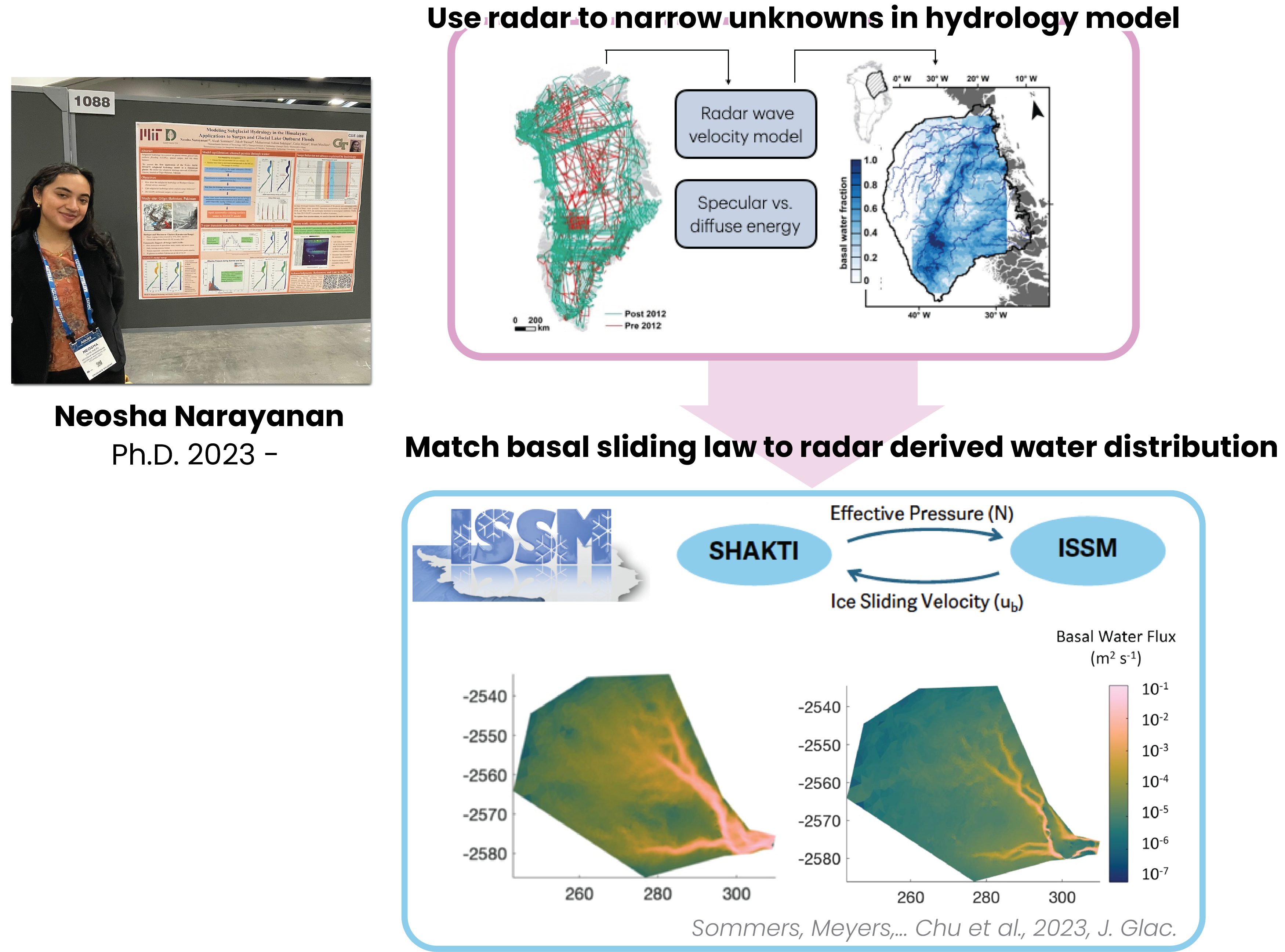Subglacial Hydrology
As Arctic summers become hotter and longer, surface meltwater is increasingly contributing to the mass balance of outlet glaciers around the world. This meltwater can penetrate the ice sheet through fractures and moulins, reaching the subglacial system. The resulting changes in water pressure at the base of the ice sheet can affect its slipperiness and, consequently, ice flow dynamics.
Interestingly, the effect of increased meltwater on ice flow varies among glaciers and even from year to year at the same glacier. This variability raises an intriguing question: why does meltwater accelerate ice flow for some glaciers, while for others, it has minimal impact? The answer likely lies in the specific pathways and processes occurring within the hidden englacial (within the ice) and subglacial (beneath the ice) systems.
At PGSL, we use geophysical methods like radio-echo sounding to study these hidden systems and better understand the complex relationship between meltwater and ice dynamics.
Methodology
- Our lab employs two approaches to study glacier hydrology:
- Quantifying Subglacial Water Content Using Radar Sounding:
- We use radio-echo sounding to send radio waves through the ice and analyze the reflected signals from the ice-bed interface, constraining basal conditions beneath the Greenland Ice Sheet. We combine two key metrics derived from these reflected signals:
- Bed Reflectivity: The strength of the reflected signal, which helps us identify locations where water has pooled at the base of the glacier.
- Specularity Content: The distribution of scattered versus mirror-like reflections in the signal, providing information about the smoothness and orientation of the ice-bed interface.
- Integrating Radar Observations with Large-Scale Ice-Sheet Models:
- We incorporate our radar-derived water content estimates into ice flow models, such as NASA's Ice Sheet System Model (ISSM) and the SHAKTI hydrology model. These models help us calculate basal shear stress - a key factor controlling how fast ice flows - based on the ice velocity and water pressure at the bed. By comparing our model results with radar observations, we can refine the models and improve their ability to predict future glacier behavior. This work is led by Neosha Narayanan. Click on the figure below to learn more about her work.
Selected Publications
Firn Hydrology
Firn, the transitional stage between snow and glacial ice, adds another layer of complexity to glacier hydrology. Firn aquifers are bodies of liquid water stored within this porous layer of compacted snow on glaciers and ice sheets. These aquifers can impede or delay meltwater drainage to the bed, influencing the timing and magnitude of subglacial water pressure changes and, consequently, ice flow velocities.
A prime example of the role of firn aquifers in modulating ice dynamics can be observed at Helheim Glacier, one of the largest outlet glaciers in Southeast Greenland. Here, the timing of meltwater drainage from the firn aquifer to the subglacial system is largely controlled by the aquifer's connection with englacial crevasses, which are vertical fractures within the ice that can serve as conduits for water flow. At PGSL, we investigate the pathways of water from the surface to the englacial and subglacial systems through a combination of field observations and numerical modeling.
Over the past four years, our team has been conducting field campaigns at Helheim Glacier, deploying a suite of geophysical and hydrological instruments to study firn aquifers and their influence on ice dynamics. By integrating these field observations with numerical models of firn hydrology and ice dynamics, we aim to better understand the complex interplay between surface melt, firn aquifers, and glacier motion.

